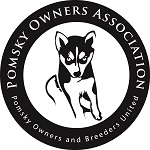When caring for our beloved canine friends, many strive to ensure they have the best diet possible. But with many food options out there, you may wonder if homemade dog food is a viable option for your pup’s nutrition needs. Making and feeding your safe dog meals from scratch can provide significant health benefits — however, like anything related to pet nutrition, certain risks are involved.
In today’s article, we will look into what commercial diets can’t provide and discuss how you can ensure any at-home recipes are tailored to meet your pet’s dietary requirements.
What goes into homemade dog food, and why is it safe to feed them this
Homemade dog food is a much safer and healthier alternative to store-bought food. It contains the vital proteins, fats, carbohydrates, vitamins, and minerals necessary for your pup’s nutrition. Start with lean meat as the main ingredient; it’s a great protein, iron, and zinc source. You’ll also want to mix in vegetables like squash, spinach, or carrots, as they provide essential vitamins and minerals.
For healthy fat, use small amounts of olive oil or fish oil. Don’t forget to include grains like brown rice or quinoa for the needed carbohydrates, fiber, and B vitamins. Since you know exactly what goes into your dog’s food when you make it yourself, you can be sure your pup is getting only the best nutrition without any added fillers.
The benefits of feeding your homemade dog food
The best natural dog food is one that’s tailored to meet the specific needs of your pup. When you make homemade meals for your pup, you can control the ingredients and ensure each meal is tailored to individual nutritional requirements. You can also choose organic and locally sourced meats, fruits, vegetables, and grains, which are more likely to be free from toxins and contaminants.
Homemade dog food also allows you to provide your pup with variety. Store-bought kibble often contains the same ingredients day after day, but when you make meals from scratch, you can give him a different meal each time. Not only does this help keep him interested in his food, but it also helps ensure that he gets the best possible nutrition.
Finally, feeding homemade food is cost-effective. When you make the meals yourself, you can choose bulk ingredients much cheaper than store-bought food and stretch your grocery budget further.
Potential risks associated with feeding dogs homemade food
While there are many benefits to feeding your pup homemade dog food, there are also certain risks. For example, you may need to be aware of the proper ratios of vitamins, minerals, and other nutrients your pup needs. If the food isn’t appropriately balanced, it can lead to nutritional deficiencies, which could cause health issues down the line.
Another potential risk is contamination. Even if you use the best ingredients available, there’s always a chance that they could be contaminated with bacteria or parasites. Properly handling and cooking the food can significantly reduce this risk, but it’s something to be aware of.
Finally, feeding homemade food is much more time-consuming than buying store-bought kibble. If you need more time or energy to make meals for your pup, you may have better options.
How to make sure your homemade dog food is nutritionally balanced
If you decide to feed your homemade pup meals, it’s essential to ensure that the food is nutritionally balanced. Start by talking to your vet about your pup’s specific dietary requirements; they will be able to provide you with more information on what nutrients and ratios are best for your pup.
You can also refer to a book on canine nutrition to ensure you include all the necessary vitamins, minerals, and other nutrients in your homemade meals. It’s best to create a meal plan for your pup to get a balanced mix of proteins, fats, carbohydrates, and other essential nutrients each day.
Finally, remember treats! They should be fed in moderation and only make up a small portion of your pup’s daily diet. When you choose treats, choose high-quality options free from artificial preservatives or flavors.
Tips for transitioning your dog from commercial food to homemade food
Making a switch from store-bought food to homemade can be stressful for your pup, so it’s best to take things slow. Start by slowly introducing small amounts of the new food into the current diet and gradually increase the ratio over time.
Make sure you’re also offering him plenty of fresh water throughout the transition period. You should also monitor his health and behavior closely to ensure he’s adapting well.
Finally, it’s best to slowly switch him over to the new food over several weeks. It will give his digestive system time to adjust and ensure he doesn’t suffer stomach issues.

